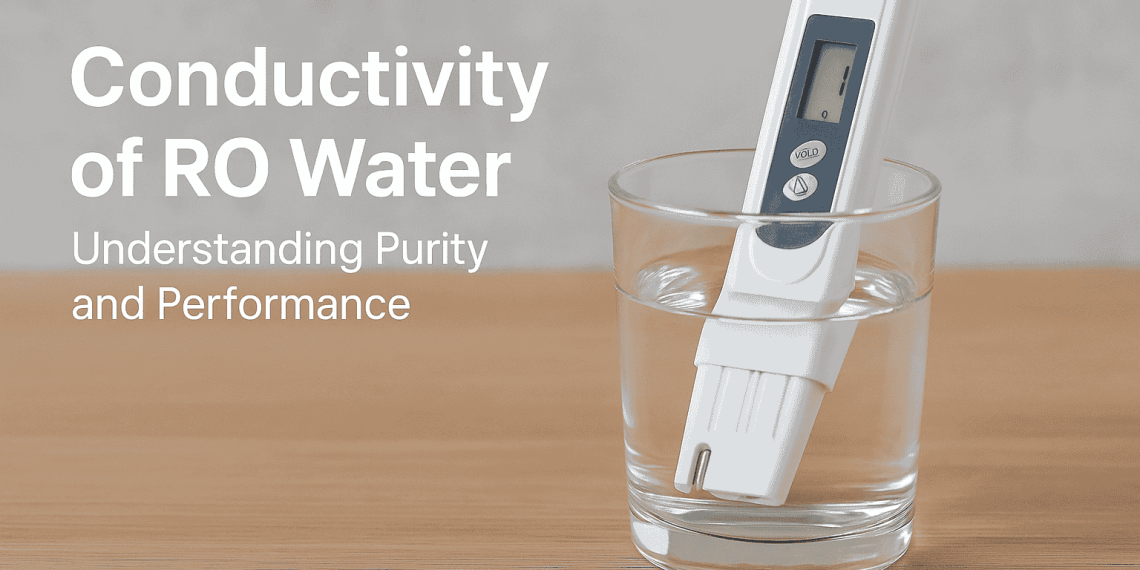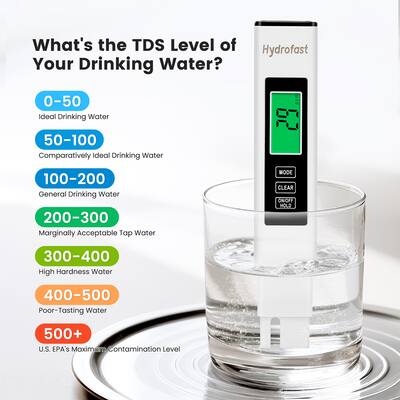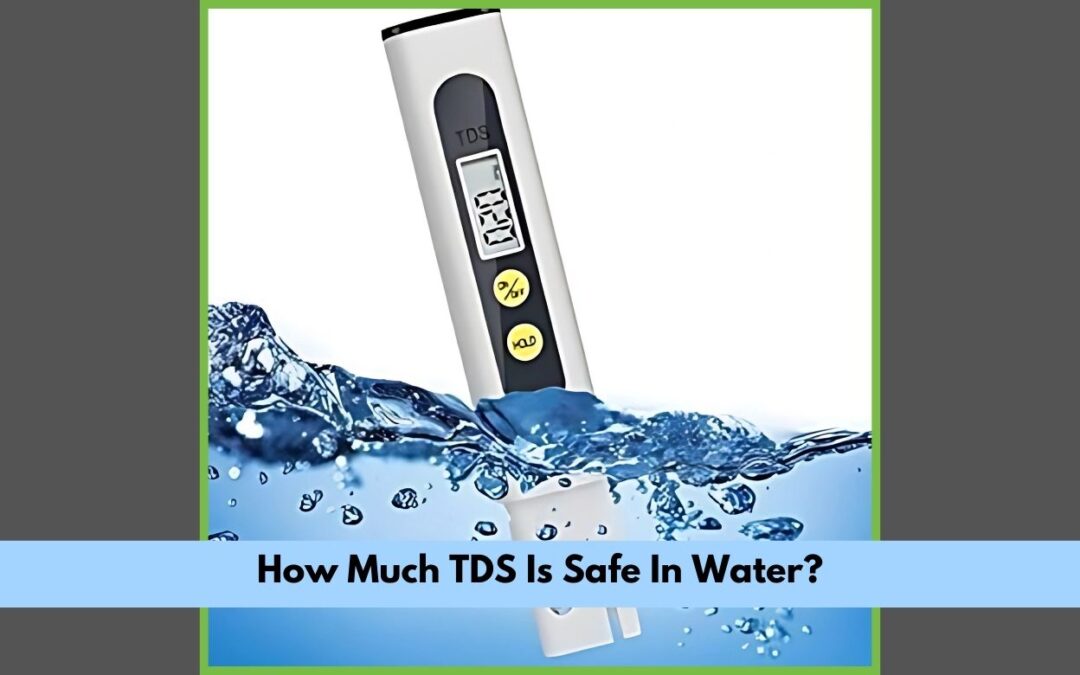Are you sure the water you drink is truly safe and healthy? One important factor to check is the TDS level of your RO water.
But what exactly should the TDS of RO water be? Understanding this simple number can make a big difference in your health and taste experience. You’ll discover the ideal TDS range for your RO water and why it matters to you.
Keep reading, and you’ll learn how to ensure every drop you drink is just right.

Credit: www.ampac1.com
What Is Tds In Ro Water
TDS stands for Total Dissolved Solids. It measures the amount of dissolved substances in water. These substances include minerals, salts, and tiny particles.
TDS affects the taste, quality, and safety of water. RO or Reverse Osmosis systems filter water to reduce TDS. This makes water cleaner and safer to drink.
Understanding Total Dissolved Solids
Total Dissolved Solids include both organic and inorganic substances. Common examples are calcium, magnesium, sodium, and chloride. TDS is measured in parts per million (ppm).
High TDS levels can make water taste salty or bitter. Low TDS water may taste flat or bland. The right balance is important for drinking water.
Why Tds Matters In Ro Water
RO systems remove many dissolved solids to improve water purity. The TDS level after RO treatment shows how well the system works. Low TDS means fewer impurities remain in the water.
Water with very low TDS may lack essential minerals. Some minerals are good for health and taste. So, TDS helps check water quality and mineral content.
How Tds Is Measured
TDS is measured using a TDS meter or digital tester. This device gives a quick reading of dissolved solids in water. It helps users monitor water quality easily at home.
Regular TDS testing ensures the RO system works correctly. It also helps decide when to service or replace filters.
Why Tds Levels Matter
Understanding the TDS level in RO water is important for health and taste. TDS stands for Total Dissolved Solids. It measures the amount of minerals, salts, and metals in the water. These solids affect the water’s quality and safety.
Water with very low TDS may taste flat or bland. Water with very high TDS can taste salty or bitter. Both extremes can affect how much water you want to drink. Balanced TDS helps maintain water’s natural taste and health benefits.
What Does Tds Indicate About Water Quality?
TDS shows the total minerals and impurities in water. It helps identify if water is too pure or too contaminated. High TDS may mean water has harmful substances. Low TDS might mean important minerals are missing.
How Tds Affects Health
Water with balanced TDS provides essential minerals like calcium and magnesium. These minerals support bones and heart health. Too low TDS water lacks these minerals. Too high TDS water may contain harmful chemicals or heavy metals.
Impact Of Tds On Water Taste
Minerals in water give it a fresh, pleasant taste. Low TDS water can taste flat or dull. High TDS water often tastes bitter or salty. Proper TDS makes water enjoyable to drink.
Role Of Tds In Ro Water Systems
RO systems remove impurities and lower TDS. But they may also remove healthy minerals. Knowing TDS helps adjust RO settings for good taste and health. Monitoring TDS ensures safe, clean water every day.
Ideal Tds Range For Ro Water
Understanding the ideal TDS range for RO water helps ensure safe and healthy drinking water. TDS means Total Dissolved Solids, which are minerals, salts, and other tiny particles in water. RO systems reduce TDS to make water pure and clean. But having too low or too high TDS can affect water quality and taste. Finding the right balance is important for health and enjoyment.
Recommended Limits By Health Organizations
Health groups suggest TDS levels below 500 mg/L for drinking water. The World Health Organization says water with TDS under 300 mg/L tastes better. The Environmental Protection Agency sets a maximum of 500 mg/L for safe water. These limits help protect health and ensure water is pleasant to drink.
Impact Of Low Tds Levels
Very low TDS water may taste flat or bland. It can lack essential minerals like calcium and magnesium. Drinking water with too low TDS for long periods may cause mineral deficiency. Low TDS water can also be more corrosive to pipes and containers.
Effects Of High Tds Levels
High TDS water often tastes salty or bitter. It may contain harmful substances like lead or arsenic. Excessive TDS can cause health problems and digestive issues. High TDS water can damage appliances and leave deposits on surfaces.

Credit: etrlabs.com
Factors Influencing Tds In Ro Water
The Total Dissolved Solids (TDS) level in RO water depends on several key factors. These factors affect how clean and safe the water is for daily use. Understanding them helps in managing TDS levels effectively.
Source Water Quality
The quality of the water entering the RO system greatly impacts TDS. Water from rivers, lakes, or wells carries different minerals and salts. High mineral content means higher TDS before treatment. Pollutants and chemicals also affect the water’s purity and TDS level. Cleaner source water leads to lower TDS in the final output.
Ro Membrane Efficiency
The RO membrane filters dissolved solids from the water. Its condition influences how well it removes impurities. A new, well-maintained membrane blocks more salts and minerals. Over time, membranes can clog or wear out, reducing efficiency. Lower efficiency means higher TDS in the treated water.
Post-treatment Processes
After the RO membrane, water may undergo extra treatment steps. These include UV sterilization, mineral addition, or activated carbon filters. Such processes can change the TDS level by adding or removing substances. Proper post-treatment ensures balanced mineral content and better taste.
Measuring Tds In Ro Water
Measuring the Total Dissolved Solids (TDS) in RO water shows the water’s purity level. TDS refers to the minerals, salts, and other particles dissolved in water. RO systems reduce TDS, but testing ensures the system works well.
Regular TDS measurement helps maintain safe and clean water for drinking and cooking. It also helps detect any problem in the RO filter or membrane early.
Common Testing Methods
There are several methods to test TDS in water. Laboratory testing is accurate but takes time and costs more. Chemical kits offer a quick check but need some skill to use. The easiest and fastest method is using a digital TDS meter.
Using Tds Meters
TDS meters are small, portable devices. They measure the electrical conductivity of water to estimate TDS levels. Using a TDS meter is simple. Dip the probe in water, wait a few seconds, and read the value on the screen. They give results instantly and can be used at home.
Frequency Of Testing
Test RO water TDS regularly to ensure good quality. For homes, checking once a month is enough. If the water tastes different or smells strange, test immediately. Frequent testing helps spot issues early and keeps water safe to drink.
Adjusting Tds Levels
Adjusting the TDS (Total Dissolved Solids) levels in RO water is important for both taste and health. RO water usually has very low TDS, which means it lacks minerals. Proper TDS balance improves the water’s flavor and provides essential minerals. There are simple ways to increase TDS safely to suit daily water needs.
Adding Minerals Back
After purification, minerals like calcium and magnesium are often missing. Adding these minerals back improves water taste and health benefits. Mineral drops or cartridges can help restore essential minerals. This process ensures water is not too pure and tastes better. It also supports body functions by providing important minerals.
Blending With Other Water Sources
Mixing RO water with other water sources can increase TDS naturally. Blending with mineral-rich water raises the total dissolved solids to a safe level. This method balances purity and mineral content without chemicals. It is an easy way to achieve ideal TDS for drinking water. Blending helps maintain water quality and taste.
Health Implications Of Tds Variations
Total Dissolved Solids (TDS) in water affect health in many ways. TDS measures the minerals, salts, and organic matter in water. Changes in TDS levels can impact the body’s hydration and nutrient balance.
Water with proper mineral content supports bodily functions. On the other hand, too high or too low TDS can cause problems. Understanding these effects helps in choosing the right water quality.
Benefits Of Balanced Mineral Content
Water with balanced TDS contains essential minerals like calcium and magnesium. These minerals help build strong bones and teeth. They also support heart health and muscle function.
Balanced minerals improve taste and encourage better water intake. Drinking good quality water keeps the body hydrated and energized. It supports digestion and helps flush out toxins.
Risks Of Excessive Or Deficient Tds
Too much TDS means excess salts and minerals in water. This can lead to kidney strain and dehydration. High TDS water may taste salty or bitter, causing less water consumption.
Very low TDS water lacks essential minerals. Drinking such water for long periods may cause mineral deficiencies. It can lead to weak bones and poor heart health.
Both extremes affect the body’s balance and overall health. Monitoring TDS levels ensures water is safe and healthy to drink.
Maintaining Optimal Tds In Daily Use
Maintaining the right TDS level in RO water is key for health and taste. TDS stands for Total Dissolved Solids. It means all minerals, salts, and metals dissolved in water. Proper TDS ensures water is clean but still has essential minerals. Water with very low TDS can taste flat and may lack minerals the body needs. Water with high TDS can taste salty or bitter and might harm your health.
Daily care and smart choices keep TDS at the best level. Regular checks and the right equipment help keep water safe and tasty. Here are some simple steps to maintain optimal TDS in daily use.
Routine Maintenance Tips
Check your RO system’s TDS level often. Use a TDS meter to measure water quality. Clean or replace filters on time. Dirty filters can let impurities pass through. Flush the RO membrane as the manual suggests. This removes trapped minerals and extends membrane life. Keep the storage tank clean to avoid bacterial growth. Regular maintenance keeps water fresh and healthy.
Choosing The Right Ro System
Select an RO system that matches your water quality. Some systems have TDS controllers to add minerals back. Pick one with easy filter replacement and clear instructions. Look for certifications ensuring safety and effectiveness. A good system balances purification and mineral retention. Choose a model that fits your budget and daily water needs. This choice affects your water’s TDS and overall health.

Credit: www.bestbuy.com
Frequently Asked Questions
What Is The Ideal Tds Level In Ro Water?
The ideal TDS level in RO water ranges between 50 to 150 ppm. This range ensures water is clean yet retains essential minerals.
Why Should Ro Water Not Have Zero Tds?
Zero TDS means all minerals are removed, making water taste flat. Some minerals are beneficial for health and taste.
How Does Tds Affect Ro Water Taste?
Higher TDS levels add minerals, enhancing taste. Low TDS water tastes bland. Balanced TDS ensures pleasant drinking water.
Can High Tds In Ro Water Be Harmful?
Yes, extremely high TDS may contain harmful substances. It’s essential to keep TDS within safe limits for health.
Conclusion
The right TDS level in RO water keeps it safe and tasty. Too low TDS can make water flat and unhealthy. Too high TDS may cause unwanted minerals and taste. Aim for TDS between 50 and 150 mg/L for best results.
Regularly test water to ensure proper TDS levels. Clean water means better health for you and your family. Choose RO systems that allow easy TDS control. Simple steps lead to better drinking water every day.

Hasan Al Sarker is a Reverse Osmosis Specialist. He has worked for many years to ensure safe drinking water for all. His research paper has been published in several journals, including Issue, Medium, and Slideshare. He is recognized as a water doctor among specialists though he did not attend medical college.
Besides working as a researcher of reverse osmosis technology, he is also very fancy with the kitchen and cooking. His guides are reading thousands of people every day. As a head of content, he is responsible for all the published articles at RO System Reviews.

